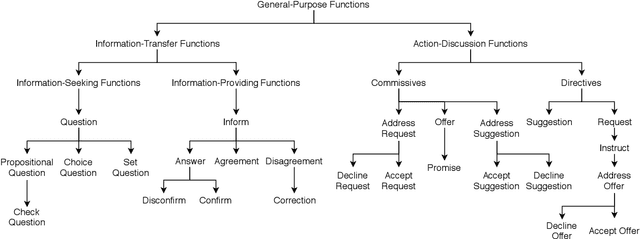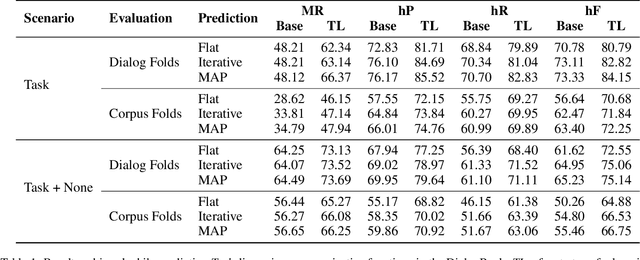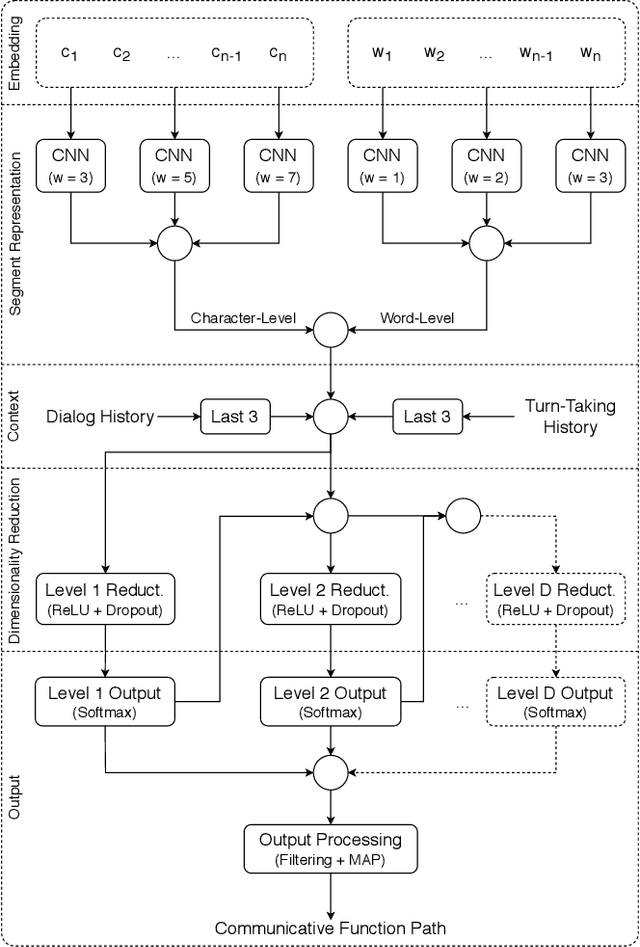General-Purpose Communicative Function Recognition using a Hierarchical Network with Cascading Outputs and Maximum a Posteriori Path Estimation
Paper and Code
Mar 07, 2020


ISO 24617-2, the standard for dialog act annotation, defines a hierarchically organized set of general-purpose communicative functions. The automatic recognition of these functions, although practically unexplored, is relevant for a dialog system, since they provide cues regarding the intention behind the segments and how they should be interpreted. In this paper, we explore the recognition of general-purpose communicative functions in the DialogBank, which is a reference set of dialogs annotated according to the standard. To do so, we adapt a state-of-the-art approach on flat dialog act recognition to deal with the hierarchical classification problem. More specifically, we propose the use of a hierarchical network with cascading outputs and maximum a posteriori path estimation to predict the communicative function at each level of the hierarchy, preserve the dependencies between the functions in the path, and decide at which level to stop. Furthermore, since the amount of dialogs in the DialogBank is reduced, we rely both on additional dialogs annotated using mapping processes and on transfer learning to improve performance. The results of our experiments show that the hierarchical approach outperforms a flat one and that maximum a posteriori estimation outperforms an iterative prediction approach based on masking.
 Add to Chrome
Add to Chrome Add to Firefox
Add to Firefox Add to Edge
Add to Edge